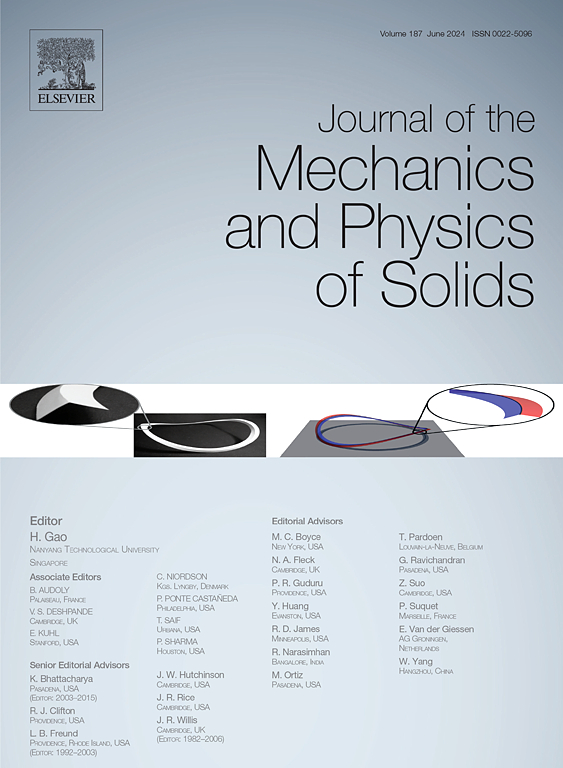Control of competing delamination in peeling-based microtransfer printing
IF 5
2区 工程技术
Q2 MATERIALS SCIENCE, MULTIDISCIPLINARY
引用次数: 0
Abstract
This paper investigates the mechanics of peeling-based microtransfer printing, focusing on the competing delamination at the stamp/ink and the ink/substrate interfaces under both high-degree and zero-degree peeling configurations. We found that the thickness and modulus contrast between the stamp and the ink significantly affect the ratio of the energy release rates at these two interfaces. Our findings also reveal that high-degree peeling has limited capability in promoting the printing of thin inks, whereas zero-degree peeling shows significant potential in facilitating this process. Experimental validations were performed to verify the proposed mechanics. Based on these insights, we discussed several strategies to tune the ratio of the energy release rates at the two interfaces to achieve controlled microtransfer printing, and conducted case studies and performed simple demonstrations to illustrate the practical applications of these strategies.

剥离微转移印花中竞争分层的控制
本文研究了基于剥离的微转移印刷的机理,重点研究了在高度剥离和零度剥离配置下,邮票/油墨和油墨/承印物界面的竞争分层。我们发现,印版和油墨之间的厚度和模量对比显著影响这两个界面的能量释放率之比。我们的研究结果还表明,高度剥离在促进薄油墨印刷方面的能力有限,而零度剥离在促进这一过程中表现出巨大的潜力。实验验证了所提出的力学特性。基于这些见解,我们讨论了几种策略来调整两个界面的能量释放率的比例,以实现受控的微转移打印,并进行了案例研究和简单的演示来说明这些策略的实际应用。
本文章由计算机程序翻译,如有差异,请以英文原文为准。
求助全文
约1分钟内获得全文
求助全文
来源期刊
CiteScore
9.80
自引率
9.40%
发文量
276
审稿时长
52 days
期刊介绍:
The aim of Journal of The Mechanics and Physics of Solids is to publish research of the highest quality and of lasting significance on the mechanics of solids. The scope is broad, from fundamental concepts in mechanics to the analysis of novel phenomena and applications. Solids are interpreted broadly to include both hard and soft materials as well as natural and synthetic structures. The approach can be theoretical, experimental or computational.This research activity sits within engineering science and the allied areas of applied mathematics, materials science, bio-mechanics, applied physics, and geophysics.
The Journal was founded in 1952 by Rodney Hill, who was its Editor-in-Chief until 1968. The topics of interest to the Journal evolve with developments in the subject but its basic ethos remains the same: to publish research of the highest quality relating to the mechanics of solids. Thus, emphasis is placed on the development of fundamental concepts of mechanics and novel applications of these concepts based on theoretical, experimental or computational approaches, drawing upon the various branches of engineering science and the allied areas within applied mathematics, materials science, structural engineering, applied physics, and geophysics.
The main purpose of the Journal is to foster scientific understanding of the processes of deformation and mechanical failure of all solid materials, both technological and natural, and the connections between these processes and their underlying physical mechanisms. In this sense, the content of the Journal should reflect the current state of the discipline in analysis, experimental observation, and numerical simulation. In the interest of achieving this goal, authors are encouraged to consider the significance of their contributions for the field of mechanics and the implications of their results, in addition to describing the details of their work.

 求助内容:
求助内容: 应助结果提醒方式:
应助结果提醒方式:


